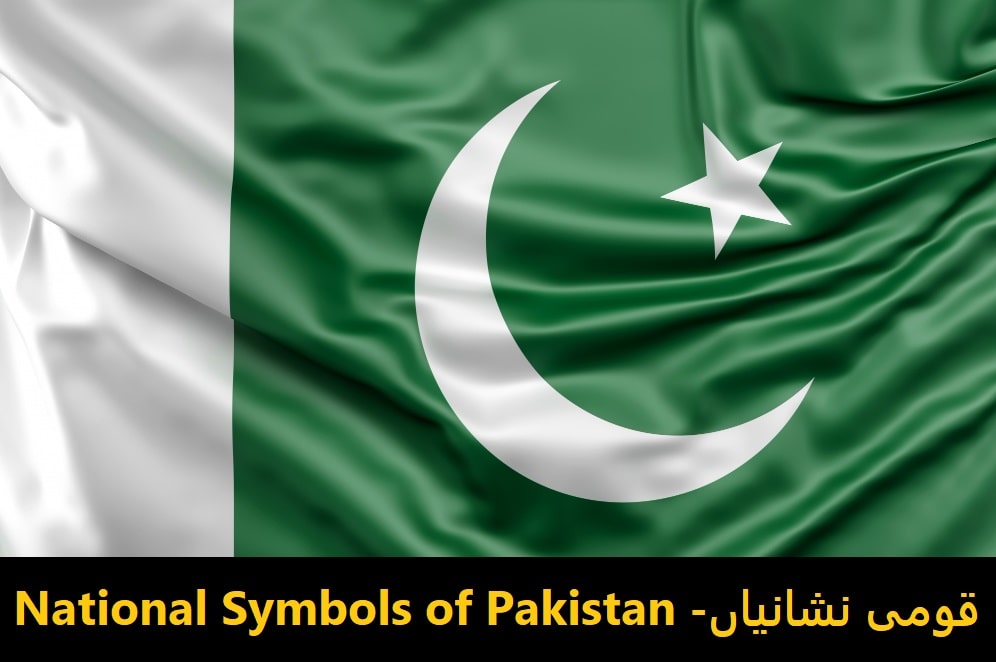
What is the National Symbols of Pakistan? Pakistan has a flag, an emblem, an anthem, a memorial tower, and a number of national heroes that are all official national symbols 01. The symbols were chosen at different times in Pakistan’s history, and there are many rules about how to define or use them.
The Lahore Resolution, which was passed by the All India Muslim League on March 23, 1940, was the first official sign that the Muslims of India wanted their own country. The Minar-e-Pakistan memorial tower was built in 1968 on the spot where the Lahore Resolution was passed.
[appear2]
The flag was chosen right before the country became independent on August 14, 1947. Both the national anthem and the state symbol were made official in 1954. Some of the other symbols are the national animal, bird, flower, and tree.
National symbols of Pakistan
| Title | Symbol | Notes |
Father of the Nation | Muhammad Ali Jinnah (Quaid-e-Azam) | Muhammad Ali Jinnah was a lawyer, politician, and the founder of Pakistan. He was born as Mahomedali Jinnahbhai on December 25, 1876, and died on September 11, 1948. Jinnah was the leader of the All-India Muslim League from 1913 until Pakistan was formed on August 14, 1947. After that, he was the first Governor-General of the Dominion of Pakistan until his death. He is known as the Quaid-i-Azam (“Great Leader”) and Baba-i-Qaum in Pakistan (“Father of the Nation”). |
Mother of the Nation(Madar-i-Millat) | Fatimah Jinnah | Fatima Jinnah was a Pakistani politician, dentist, stateswoman, and one of the main founders of Pakistan. She was also known as Mader-e Millat, which means “Mother of the Nation.” She was the younger sister of Muhammad Ali Jinnah, who started Pakistan and became its first Governor General and President. |
National poet | Muhammad Iqbal | Sir Muhammad Iqbal was a Muslim writer, philosopher, and politician from South Asia. His poetry in the Urdu language is some of the best written in the 20th century. Iqbal is remembered by a lot of people in Pakistan, where he is seen as the state’s intellectual founder. Pakistan celebrates his birthday every year as Iqbal Day, and until he was 18, it was also a national holiday. |
| State religion | Islam | As soon as Islam began and became popular in the Arabian Peninsula, there were communities of Muslims living in Sindh along the Arab coastal trade routes. During the Rashidun Caliphate, when the first Muslim missions went to the Sind, a link was made between the Sind and Islam. In Pakistan, the mosque is a very important place for both religion and social life. The Islamic calendar is used to plan a lot of rituals and ceremonies. |
National language | Urdu | Urdu is an Indo-Aryan language that most people in South Asia speak. It is the official language of Pakistan and the language everyone speaks. Urdu is the only national language of Pakistan. Along with English, it is one of the two official languages of the country. The whole country speaks and understands it. Urdu is an official language, so many people in Pakistan speak and understand it as a second or third language. It is used in the classroom, in writing, in the office, and in court. |
National flower | Common jasmine | Jasmine is a very common plant in Pakistan, and it can be found in any garden. White jasmine is the national flower of Pakistan because of its sweet smell and meanings of closeness, friendliness, and modesty. |
National tree | Himalayan cedar (Deodar) | Cedrus deodara is a type of cedar that is native to the western Himalayan and Hindu Kush mountain ranges in northern Pakistan, especially in Khyber Pakhtunkhwa. It is the tree that people in Pakistan think of as their national tree. |
National Fruit | Mango | Pakistan has a lot of mango farms (especially in the Punjab and Sindh provinces). Multan, Bahawalpur, Muzaffargarh, Khanewal, Sahiwal, Sadiqabad, Vehari, and Rahim Yar Khan are some of the best places to make them. Mirpur Khas, Hyderabad, and Thatta are the places. Dera Ismail Khan, Peshawar and Mardan. |
National vegetable of Pakistan | Lady Finger | |
National Animal | Markhor | Pakistan’s national animal is the Markhor. The Markhor is the biggest member of the goat family. It lives in the northern parts of Pakistan. Markhor means “snake eater” in Persian, and this is because Markhor is very good at killing snakes in the wild to protect its harem. Markhors are very good climbers, even though they are big. |
National aquatic marine mammal | Indus river dolphin | |
National predator | Snow leopard | |
National bird | Chukar partridge | The Chukar partridge is the country’s most important bird. The Chakor is an upland game bird from Eurasia. It belongs to the pheasant family, Phasianidae. The chukar is sometimes a sign of strength, but usually unrequited, love. It is said to love the moon and keep looking at it all the time. Because they are so aggressive when they are breeding, they are sometimes kept as fighting birds. In short, the Chukar partridge is the national bird of Pakistan for a very good reason. |
State bird | Shaheen falcon | Many people think that the Peregrine falcon is the state bird because it is a symbol of the Pakistani Air Force. |
National fish | Mahseer (Himalayan golden mahseer) | |
National reptile | Indus Crocodile | |
National sport | Field hockey | Field Martial Ayub Khan’s arrival in 1958 was one of the most important reasons why hockey was chosen as the national sport of this new country. He also sparked a new wave of interest in the sport by emphasizing it more than football or cricket. |
National mosque | Faisal Mosque | The Faisal Mosque was meant to be the National Mosque of Pakistan. It was named after the late King Faisal bin Abdul-Aziz of Saudi Arabia, who supported and paid for the project. It was done in the year 1986. From 1986 to 1993, the Faisal Mosque, which is the biggest mosque in Pakistan, was also the biggest mosque in the world. |
National tower | Minar-e-Pakistan | This tower is a reminder of the Lahore Resolution, which was the first step in Pakistan’s history. It took eight years to build, beginning in 1960 and ending in October 1968. This national monument is made up of three steps that show the three steps Pakistan took on its way to becoming independent. At the base of this Minar, the words of the Pakistan Resolution, which made Iqbal’s dreams and Jinnah’s fight more real, are written in flowers. |
National monument | Pakistan Monument | This national monument has four big petals and three small petals. The big petals represent the four provinces (Punjab, Sindh, Khyber Pakhtunkhwa, and Balochistan), and the small petals represent AJK, Gilgit-Baltistan, and FATA. The flower as a whole is also a sign and a prayer for Pakistan’s progress. |
National days | Pakistan Day (Independence Day) | Pakistan Day, also called Pakistan Resolution Day or Republic Day, is a national holiday in Pakistan that honours the Lahore Resolution, which was passed on March 23, 1940, and the country’s first constitution. |
National clothing | Shalwar kameez | Shalwar kameez is Pakistan’s national dress, and both men and women wear it. All parts of Pakistan wear this kind of clothing. There may also be intricate patterns or designs that are unique to each province. |
National mountain | K2 | K2 is also called Mount Godwin-Austen or Chhogori. It is the country’s most famous mountain. It is the highest mountain in Pakistan and the second highest in the world. It is in a part of Pakistan called Gilgit Baltistan that is near the border with China. |
National mausoleum | Mazar-e-Quaid | Mazar-e-Quaid, also known as Jinnah Mausoleum or the National Mausoleum, is the final resting place of Quaid-e-Azam (“Great Leader”) Muhammad Ali Jinnah, the founder of Pakistan. |
National airline | PIA | PIA is Pakistan’s national airline. It flies to and from all of Pakistan’s provinces, as well as Gilgit Baltistan and Azad Kashmir. |
National drink | Sugarcane juice | |
National instrument | Daf | Daf is commonly known as the national instrument of Pakistan. |
National currency | Pakistani Rupee (PKR) | Since 1948, the Pakistani rupee has been the country’s official currency. The State Bank of Pakistan, which is the country’s central bank, makes the coins and bills and is in charge of them. |
National river | Indus River | The Indus River is the country’s most important river. Pakistan’s biggest river is the Indus River. In Pakistan, the river gets most of its water from the Kabul river and the Panjnad river. The Panjnad river is made up of the five Punjab rivers coming together, four of which flow through Pakistan: the Jhelum, Chenab, Ravi, and Sutlej. |
National dishes | Biryani/Nihari | People think that both Biryani and Nihari are the national dishes of Pakistan, but neither one has been proven. |
National confectionary | Gulab Jamun | Gulab jamun (also spelled gulaab jamun) is a milk-solid-based sweet and a type of mithai.It is made mainly from milk solids, traditionally from khoya, which is milk reduced to the consistency of a soft dough. |
National colors | Green and white | |
National coat of arms | Coat of Arms of Pakistan | |
National archives | National Archives of Pakistan | The Government of Pakistan set up the National Archives of Pakistan to keep public and private records that are important to Pakistan’s history, culture, and heritage and make them available to the public. |
National Library | National Library of Pakistan | The National Library of Pakistan is the country’s main library and research library. It is near Islamabad. |
National Museum | National Museum of Pakistan | The National Museum of Pakistan is where the country’s history is kept. It is close to the capital city of Islamabad. |
National cinema | Cinema of Pakistan (Lollywood) | The Pakistani film industry is called “The Cinema of Pakistan.” Pakistan has a number of film studios, most of which are in Karachi and Lahore, its two largest cities. Pakistani cinema has always been an important part of Pakistani culture. After years of decline, it has started to grow again in recent years, providing entertainment for both people in Pakistan and those living abroad. |



